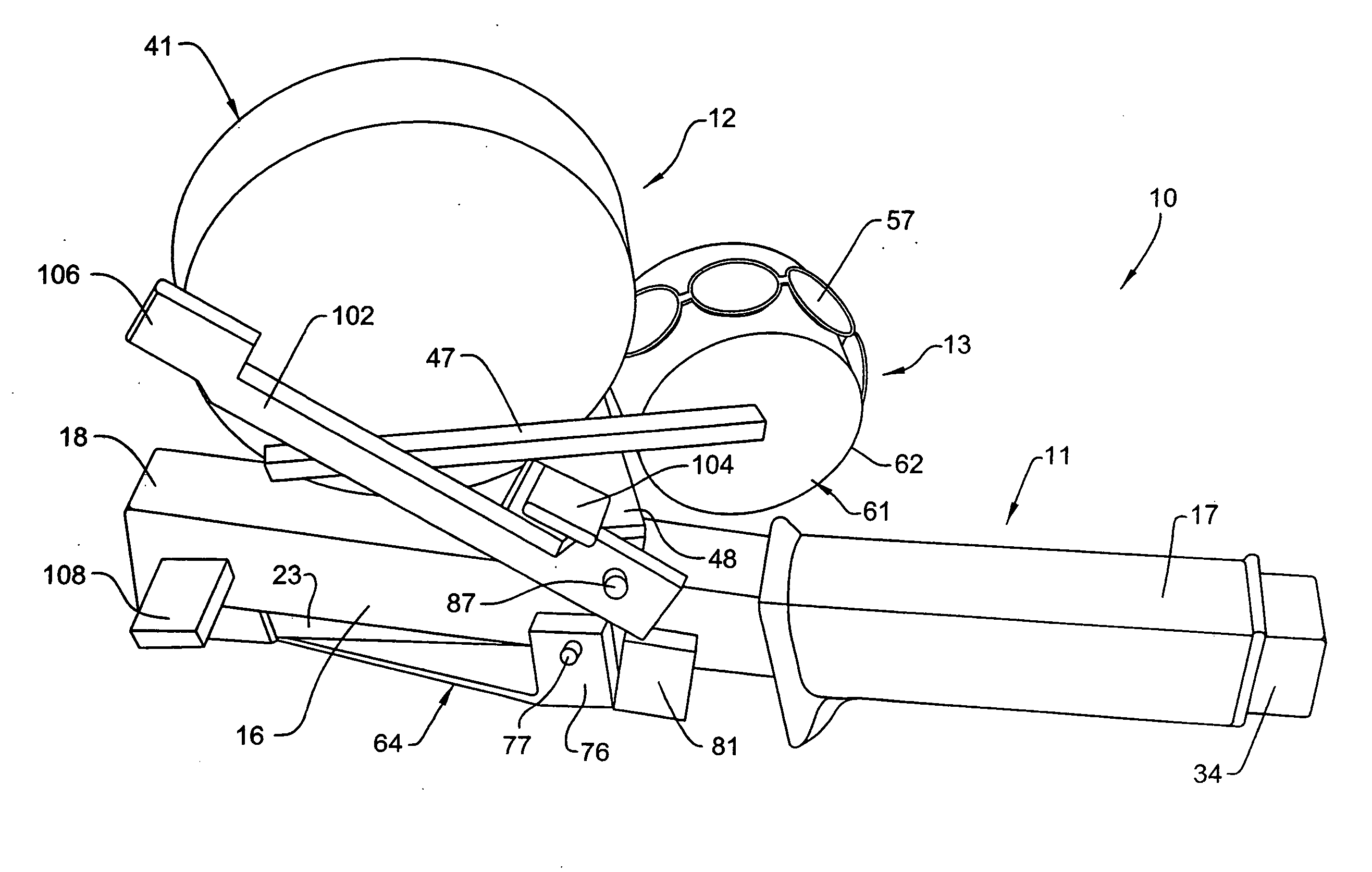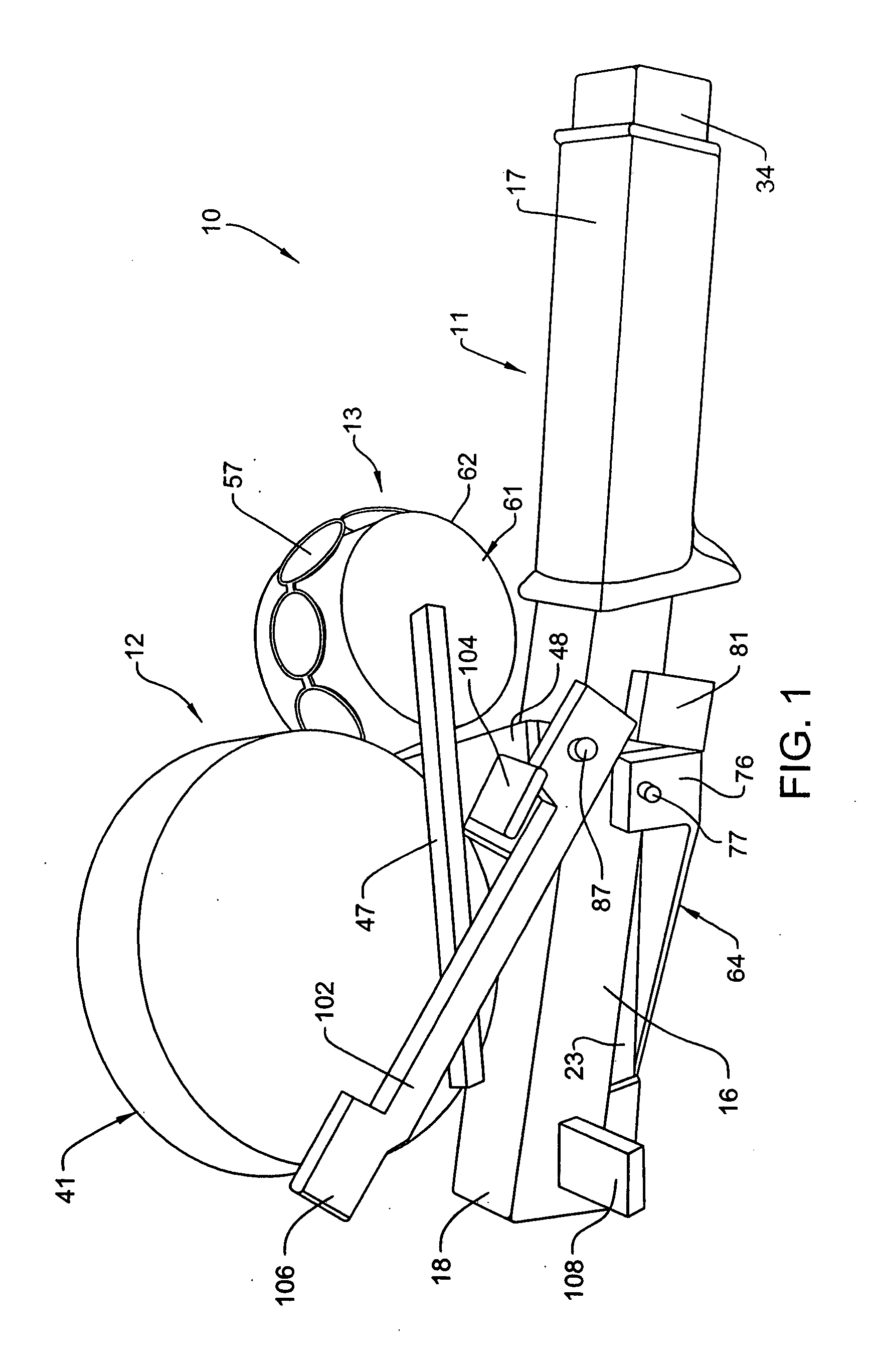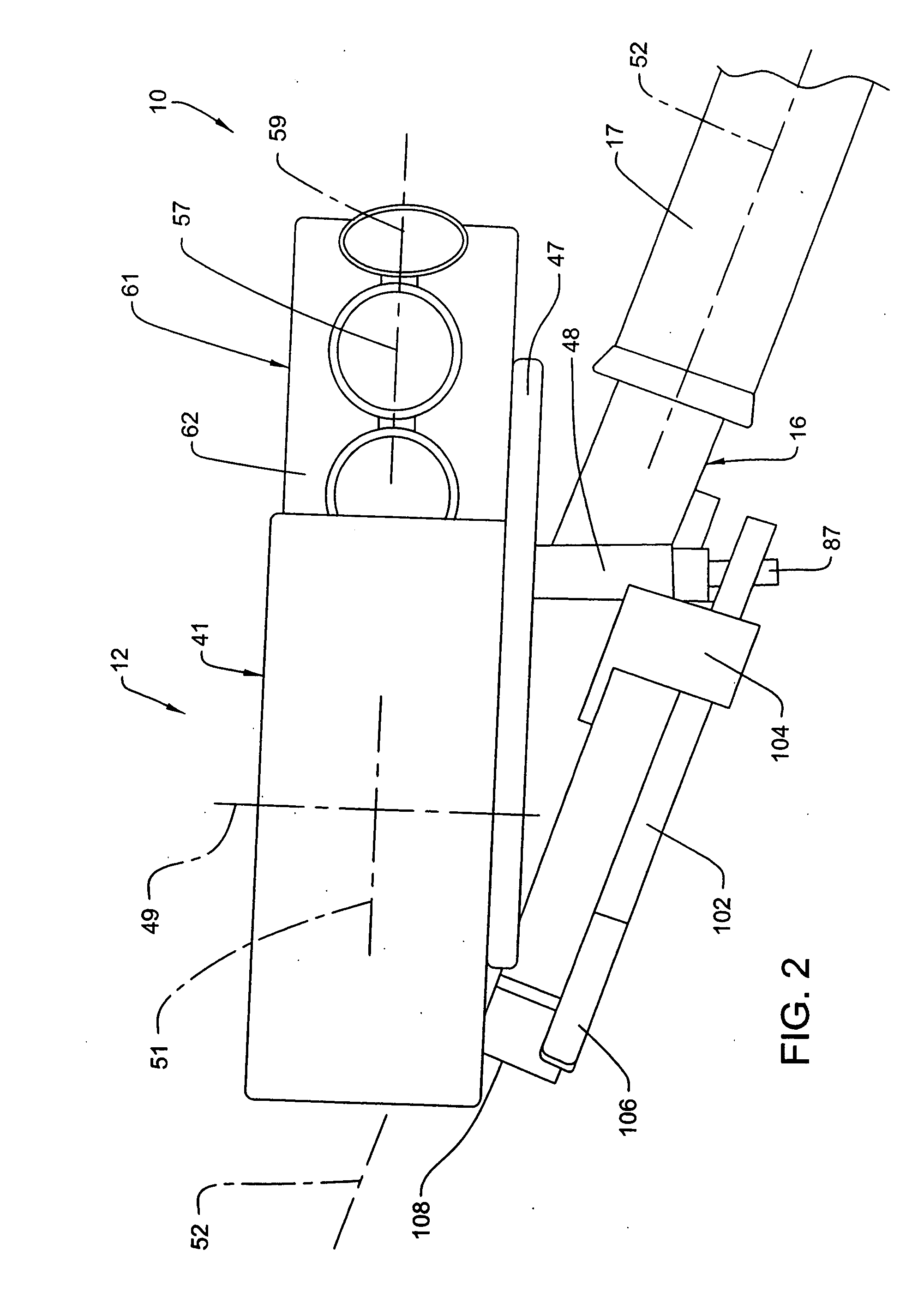Impact fastener tool with cap feed
- Summary
- Abstract
- Description
- Claims
- Application Information
AI Technical Summary
Benefits of technology
Problems solved by technology
Method used
Image
Examples
Embodiment Construction
[0026] Referring to FIGS. 1-7, there is illustrated a preferred embodiment of a manually-operated hammer-type cap fastener tool 10 according to the present invention. This tool 10, in the disclosed and preferred embodiment, uses staples as fasteners, and is defined principally by a stapler unit 11 having a cap supply 12 mounted adjacent the head end of the tool, a guide arrangement 13 for feeding individual caps into a discharge position adjacent the head or impact end of the tool, and a feeding arrangement 14 which effects controlled feeding of caps toward the discharge position.
[0027] The stapler unit 11, considered by itself, is generally conventional and well known, but will be described herein both for background purposes and for facilitating description of its structural and functional cooperation with the cap supply, feeding and discharge features associated with the present invention.
[0028] More specifically, the stapler unit 11 (FIGS. 8 and 9) includes an elongate rigid h...
PUM
 Login to View More
Login to View More Abstract
Description
Claims
Application Information
 Login to View More
Login to View More - R&D
- Intellectual Property
- Life Sciences
- Materials
- Tech Scout
- Unparalleled Data Quality
- Higher Quality Content
- 60% Fewer Hallucinations
Browse by: Latest US Patents, China's latest patents, Technical Efficacy Thesaurus, Application Domain, Technology Topic, Popular Technical Reports.
© 2025 PatSnap. All rights reserved.Legal|Privacy policy|Modern Slavery Act Transparency Statement|Sitemap|About US| Contact US: help@patsnap.com



